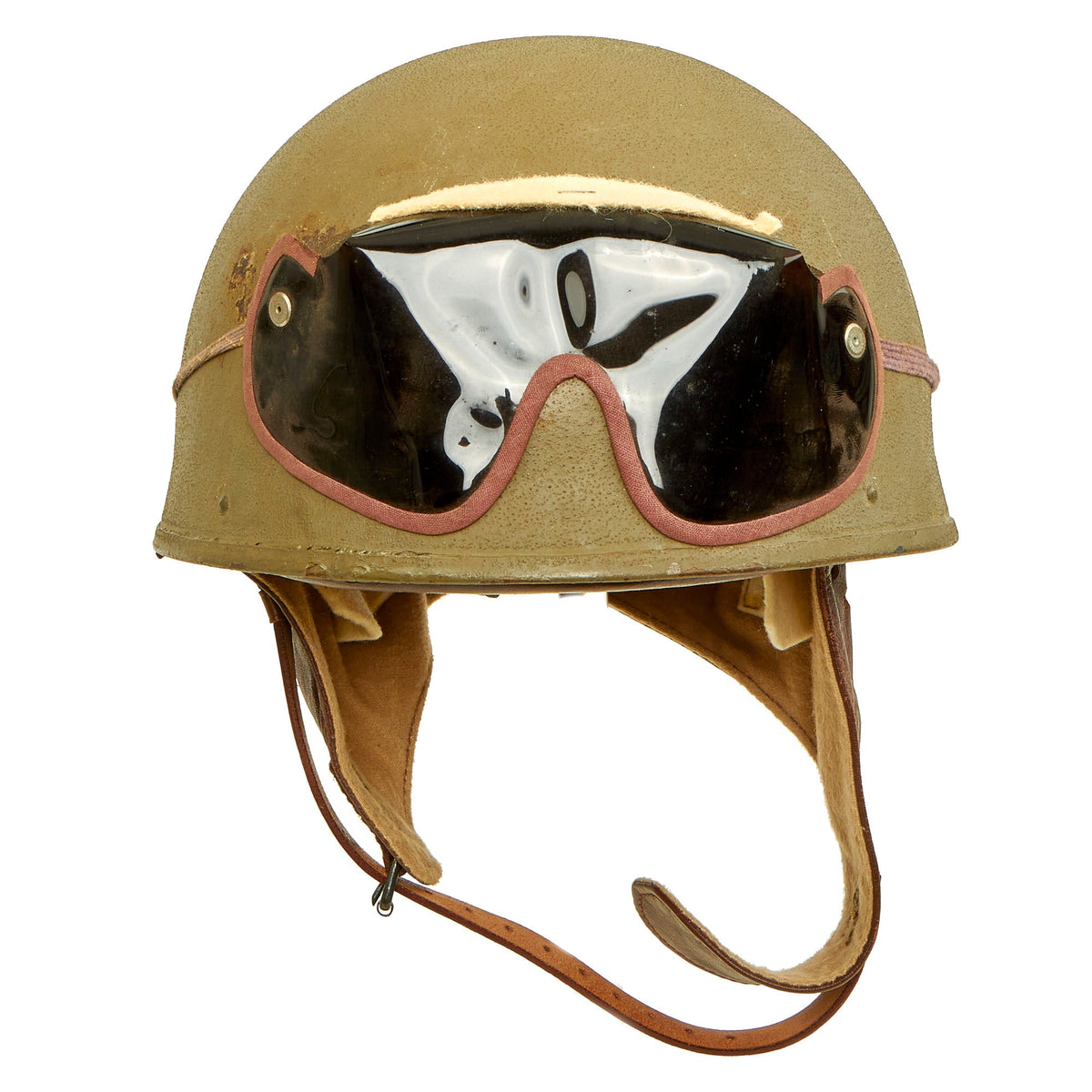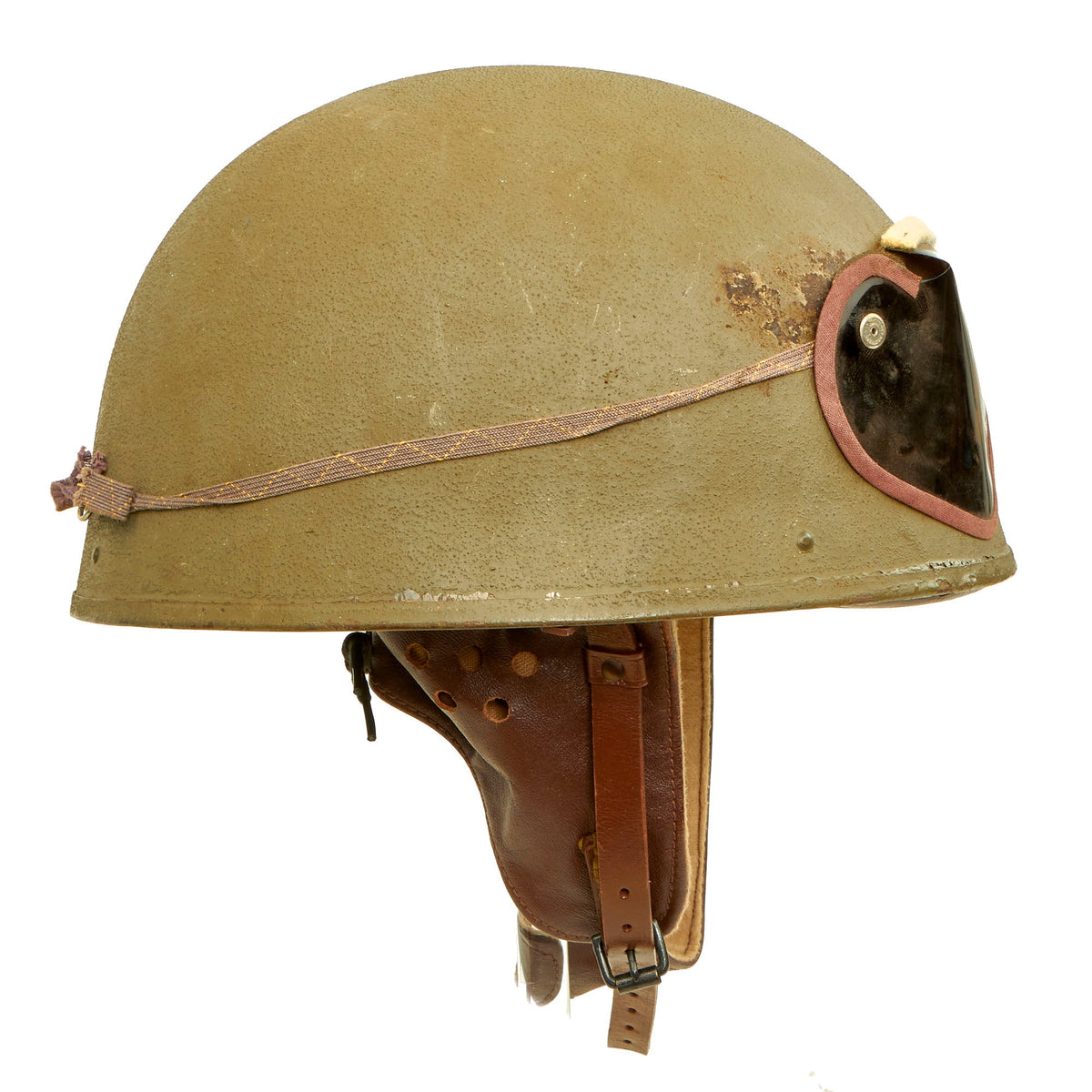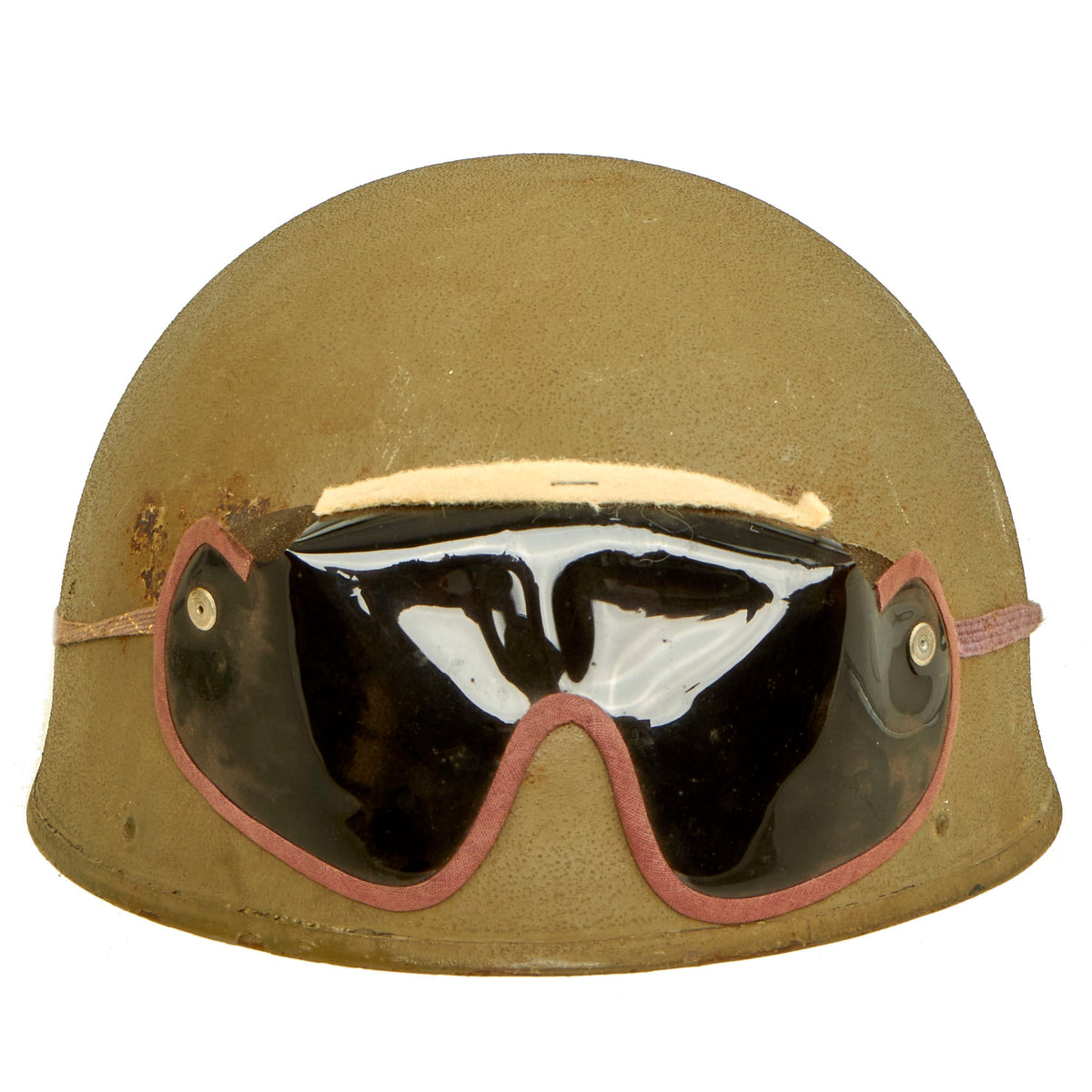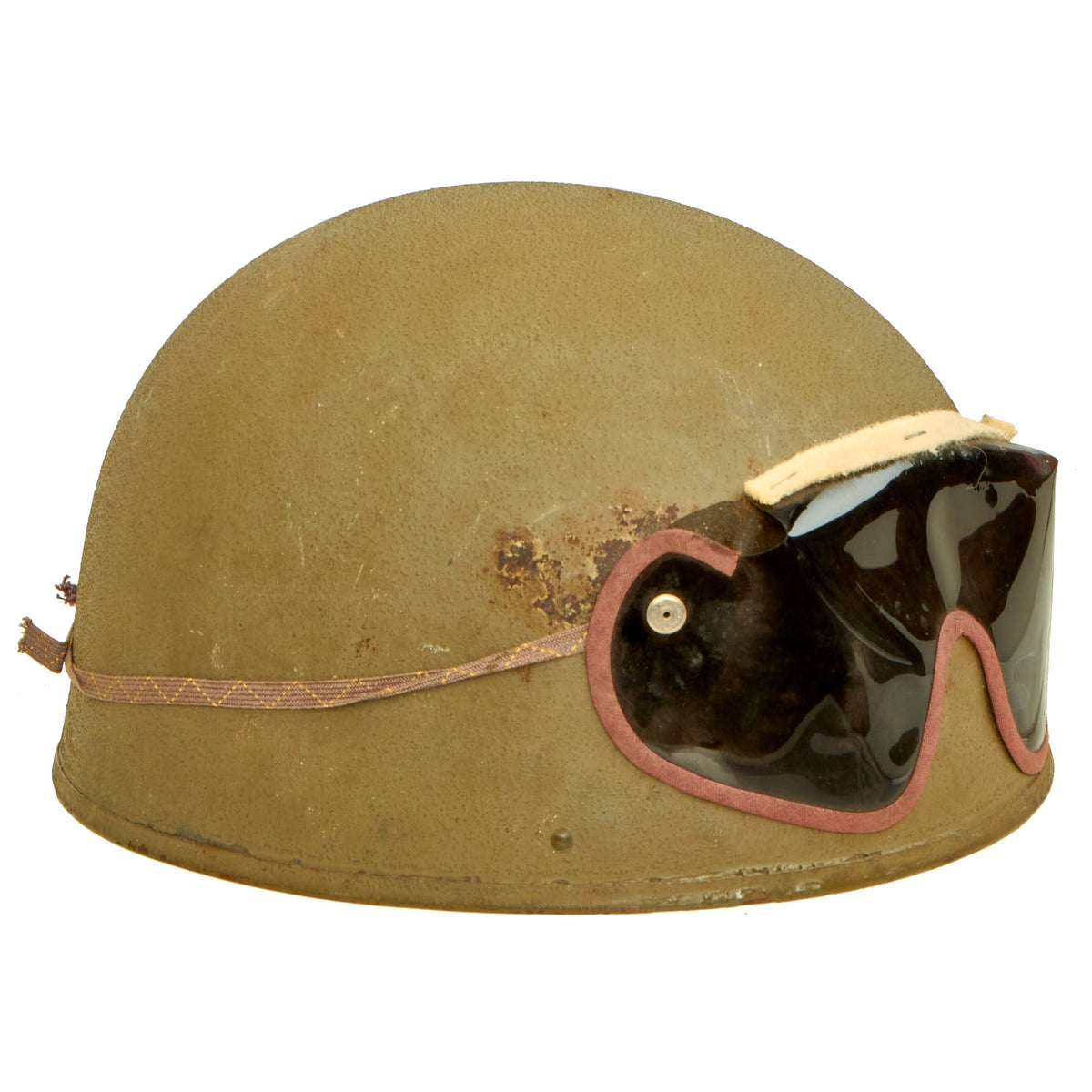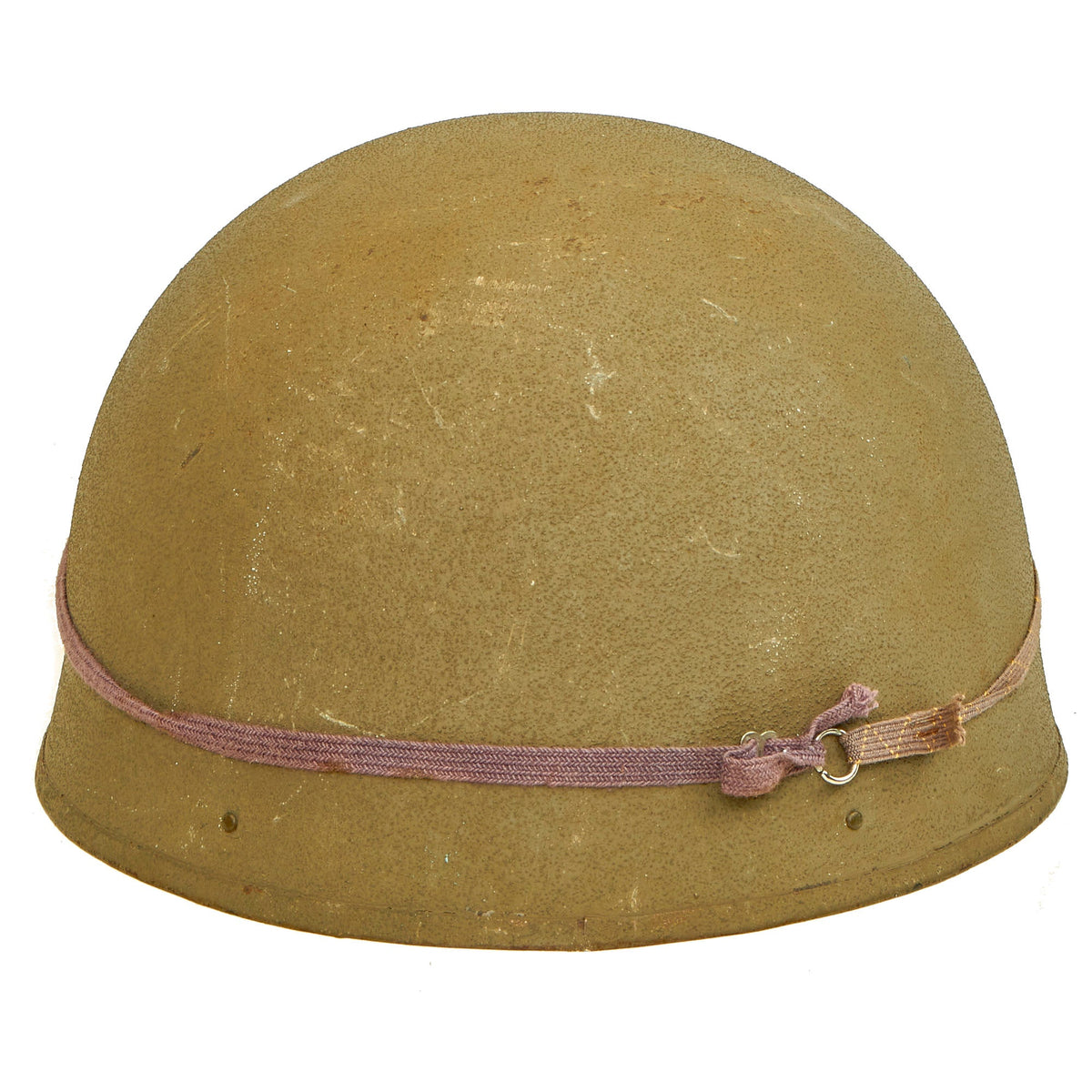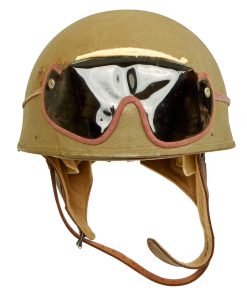Original Excellent WWII British 1942 Dated MkI Dispatch Rider Helmet by Briggs Motor Bodies Ltd. with Eye Shields – size 6 3/4 Original Items
$ 295,00 $ 118,00
Original Item: Only One Available. This is an excellent condition original WWII British MK I Dispatch Rider helmet, which shows very little evidence of use. We believe it to be unissued, with all wear coming from long storage. The shell has original paint with no major dents or dings that we can see, just some light scuffs. The Leather liner and ear flaps are soft and supple and very clean. The leather liner is nicely marked with BMB and dated 1942, and is marked with size 6 3/4 inside a shield. BMB is the marking for Briggs Motor Bodies Ltd., who also made Brodie and other helmets for the British war effort. The wool felt ear padding is still completely intact, which is rare, as it degrades easily. The chin strap snap still works, as does the buckle, and the rear lacing is intact.
The included heavy tint eyeshields are in great shape, and are the type that would have been used during the day. There is still some stretchiness in the elastic, and they have a lovely look.
This is without a doubt one of the finest dispatch rider helmets we have seen! Comes more than ready for display.
The British Dispatch Rider’s Helmet:
The MkII paratrooper helmet shell was also used for dispatch riders during and after World War II. It was introduced in 1942 and features a front pad and leader neck flap that forms a double chinstrap. This is a great example of the classic WWII British Dispatch Rider helmet that will make a great addition to any collection.
With a vital role at a time when telecommunications were limited and insecure, dispatch riders, usually mounted on horseback or motorcycle, were used to carry urgent orders and messages from headquarters to various other military units. When needed, they would also deliver carrier pigeons to units that requested them.
In the British Army, motorcycle dispatch riders were first used in World War I by the Royal Engineers Signal Service. The riders were originally volunteers, some of whom supplied their own machines. The British often referred to dispatch riders as Don R’s during World War 2. In World War II, Royal Corps of Signals soldiers carried out the role and the Royal Signals Motorcycle Display Team was formed from their number. They were also used by the Royal Air Force and the Royal Navy, where they maintained contact with land bases and some of the riders were members of the Women’s Royal Naval Service. The British military often used Triumph Motorcycles for this purpose.
Fast Shipping with Professional Packaging
Thanks to our longstanding association with UPS FedEx DHL, and other major international carriers, we are able to provide a range of shipping options. Our warehouse staff is expertly trained and will wrap your products according to our exact and precise specifications. Prior to shipping, your goods will be thoroughly examined and securely secured. We ship to thousands clients each day across multiple countries. This shows how we're dedicated to be the largest retailer on the internet. Warehouses and distribution centres can be located throughout Europe as well as the USA.
Note: Orders with more than one item will be assigned a processing date depending on the item.
Before shipping before shipping, we'll conduct a thorough inspection of the items you have ordered. Today, the majority of orders will be delivered within 48 hours. The delivery time will be between 3-7 days.
Returns
The stock is dynamic and we cannot completely manage it because multiple stakeholders are involved, including our factory and warehouse. So the actual stock may alter at any time. It's possible that you may not receive your order once the order has been made.
Our policy is valid for a period of 30 days. If you don't receive the product within 30 days, we are not able to issue a refund or an exchange.
You can only return an item if it is unused and in the same state as the day you received it. You must have the item in its original packaging.
Related products
Uncategorized
Uncategorized
Uncategorized
Armored Burgonet Helmet & Polearm from Scottish Castle Leith Hall Circa 1700 Original Items
Uncategorized
Uncategorized
Angolan Rebel 1970s era 60mm Inert Display Mortar from Angolan Civil War Original Items
Uncategorized
Uncategorized
Uncategorized
Uncategorized
Uncategorized
Uncategorized
Uncategorized
Uncategorized
Armoured Fighting Vehicles of the World: AFVs of World War One (Hardcover Book) New Made Items
Uncategorized
Uncategorized
Uncategorized
Uncategorized
Band of Brothers ORIGINAL GERMAN WWII Le. F.H. 18 10.5cm ARTILLERY PIECE Original Items
Uncategorized
Uncategorized
Australian WWII Owen MK1 Machine Carbine SMG Custom Fabricated Replica with Sling Original Items
Uncategorized
Uncategorized
